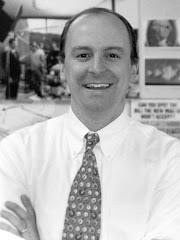After auditioning thousands of comeidans, we're down to the final 32. Here are some of the highlights and lowlights from last night's show.
- A very funny woman from New York did a whole set about living in New York. Hello? She was performing in LA. Lesson: Know your audience and do material they might relate to. (Yes, I ended that sentence with a preposition. Sue me.)
- Another comedian, a 9-year veteran, got up on stage and did a series of unrelated one-liner jokes. He would have been right at home in the Poconos circa 1959. But in 2007 he couldn't get in a rhythm nor could he build any momentum with his audience. Lesson: Lose the old school approach. Stay current.
- A comedian from Minneapolis took nearly 25 seconds of her 2-minute set to get to her first laugh. Nothing against Minnesotans, but that is way too long. Lesson: Life is short. Get to your point fast.
- The comedians who seemed like they were having fun as they walked onto the stage and up to the mic seemed to perform the best. Lesson: Get them to like you before you start talking. Lesson #2: Have as much fun as the audience.
- And the comics who performed the most universal material (i.e. stuff that everyone can relate to) did the best. Those who just talked about themselves didn't fare as well. Lesson: It's not about you. It's all about the audience.
- Best line of the night was from Doug Benson after he earned a spot in the finals. "I feel like a weight has been lifted and it has been replaced by another weight."
My favorites from last night's episode were Ralph Harris and Doug Benson.
Time to Hit Your Stride...
Your Turn #1 and #2: See the "Lessons" above.
Happy Speaking,
Steve Hughes
Speaker - Trainer - Critic
